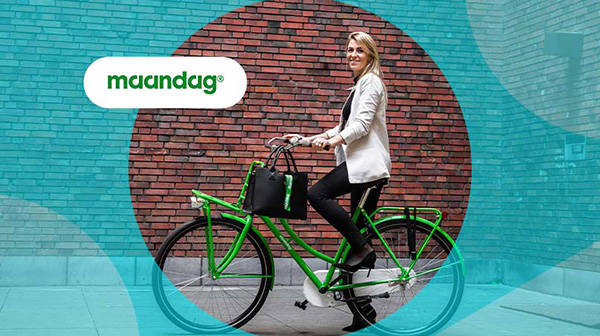- Adapt to Modern Applicants
- Use an Application Tracking System
- Sign Documents Digitally
- Save time, costs, and resources
- Improve the Onboarding Process
At the end of the first quarter of 2021, 334,000 people were unemployed in The Netherlands, 50,000 fewer than in the previous quarter. That is the most significant decrease registered by the Central Bureau of Statistics (CBS) in this century. At the same time, the number of unfilled job vacancies has increased from 26,000 to no less than 245,000. There is a war on talent, especially in trade, healthcare, education, ICT, technology, and the catering industry.
Adapt to Modern Applicants
Due to the corona pandemic, the demand for new staff seemed to dry up. That fear hasn’t (yet) come true, but the corona measures made reaching new talent more challenging than ever.
“As an employer, you have to facilitate candidates to contact you effortlessly throughout the entire process,” says Niels Buijs, product manager at CM.com. “Use the channels they use, whether WhatsApp, webchat or Facebook Messenger. As an organization, you’ll have to adapt.”
His colleague Ruben Balfoort states that today’s talents no longer apply traditionally:
“They constantly receive job offers via LinkedIn. They want to inform themselves. They want to see and feel how an organization functions and its vision and culture to see if they want to be a part of it.”
“New talents are very mobile-oriented,” he continues. “They want to contact a company straightforwardly and online via their chosen channels to know more about that company. That is when the first selection takes place.”
Use an Application Tracking System
The employer can improve the candidate experience using Application Tracking System software (ATS). A system like that ensures a smooth selection process after recruitment. The steps in the process are clear for the candidates, and the follow-up after an interview is adequate. A good workflow focused on the candidate’s experience can even turn a rejection into a positive experience.
“Companies that are using ATS are winning companies,” Buijs knows.
“Think about using a chatbot in the onboarding process.” Niels Buijs - Lead Product Marketing
Sign Documents Digitally
In the war on talent, candidates should encounter as few obstacles as possible. That is also true during the process of signing a contract.
“Especially during the covid pandemic, many interactions are online via Zoom or Microsoft Teams, instead of face to face. And then you ask a candidate to print and post a physical contract?!”
According to Buijs, that doesn’t add up: “Signing documents on paper is obsolete, expensive, and time-consuming. It’s so easy to sign documents digitally, and it’s all legally binding. It can make a difference in the actual choice if a candidate has received two offers: one in a fully digital environment and one that has to be printed out and sent in an envelope.”
Save time, costs, and resources
In addition to an employment contract, many other documents are suitable for digital signing, such as car lease agreements, laptop loan contracts, payroll tax reduction forms, or training agreements. The benefits are apparent, for instance, time savings.
“Practice has shown that digital signing saves 10 minutes per document,” says Buijs.
Even more important is the lead time for signing a contract. “The average of 12 days has been reduced to less than 9 hours. In many sectors, for instance, health care, time is of the essence. Moreover, it reduces the chance of talent changing their mind before signing.”
“Cost savings are a decisive argument for digital signing.” Ruben Balfoort - Product Marketer Sign
Maandag, the secondment agency operating in the public sector, has been solely using digital signing since December 2020. In Kirsten Soester’s experience, it reinforces the image of the organization. “Professionals are quite happy signing and sending contracts digitally. And at the same time, we are contributing to reducing paper usage.”
In addition to saving space, digital signing has another advantage: fewer mistakes. There is an initial on each page, and documents don’t get lost or are in the wrong file. And if that isn’t enough, the costs will help make the decision, Balfoort knows, as he points out the prices for paper, printing, envelopes, postage, and labor. “If you are completely digital and use the proper software, you can save up to three-quarters of the initial costs.”
Read more in Monday’s Customer Story
Improve the Onboarding Process
The next step is the period between signing the contract and the first day of work.
“Many people experience that period as a gap,” Buijs says. “Many organizations could improve their onboarding process, for instance, with a chatbot, a sort of digital buddy. That way, you can familiarize new employees with the company before their first day at work. You can deal with practicalities like collecting a leased car, arranging parking space, explaining which entrance can be used, and setting up the first few meetings. But it could also be used to show a welcome video from the supervisor.”
“Use the proper tools” is the final advice from Buijs. “Preferably one system that provides you with all you need, instead of multiple systems. Otherwise, it’s still not as efficient as it can be.”
This article has been written in collaboration with pwnet.nl.

